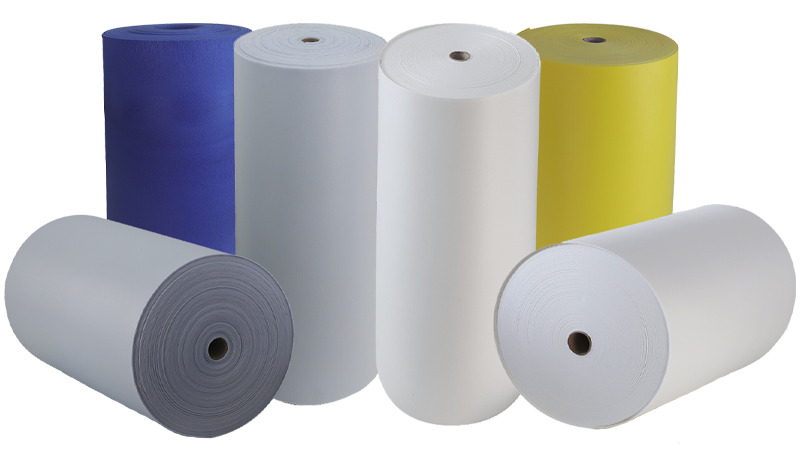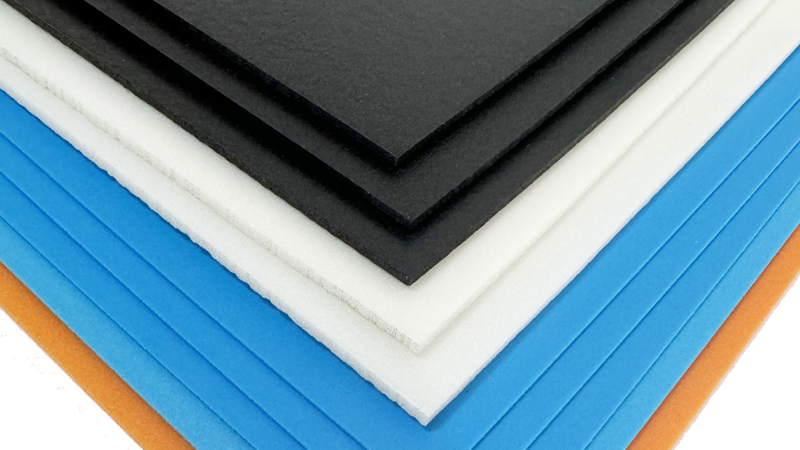Insulating your home is one of the most effective ways to enhance comfort, reduce energy costs, and protect your living space from external elements. However, not all insulation materials are created equal. Cross-linked polyethylene (PE) foam stands out due to its versatility, durability, and thermal efficiency. In this guide, we’ll explore why cross-linked PE foam insulation is a great choice for your home and how it can make a difference.
What is Cross-Linked PE Foam?
Before diving into its benefits, let’s understand what cross-linked PE foam is. Essentially, it’s a closed-cell foam made from polyethylene. The cross-linking process gives it a dense, uniform structure that makes it highly effective for insulation. Unlike traditional open-cell foams, cross-linked PE foam has tiny, closed air pockets, making it excellent at preventing heat transfer. This property makes it a popular choice not only in homes but also in various industries.
How It’s Made
Cross-linked PE foam is manufactured by chemically or physically cross-linking polyethylene. This process creates a network of interconnected cells, resulting in a strong, flexible, and durable material. You might find it in rolls, sheets, or custom shapes, depending on how it’s used.
Unique Properties
- Lightweight yet durable
- Flexible and easy to install
- Moisture-resistant
- Thermal and sound insulating
- Environmentally friendly due to recyclability
Energy Efficiency: Lowering Your Utility Bills
One of the main reasons people choose cross-linked PE foam is its excellent thermal insulation. The closed-cell structure effectively traps air, acting as a barrier that reduces heat transfer. This means less warm air escapes your home during winter and less hot air enters during summer.
Benefits for Your HVAC System
If your HVAC system doesn’t have to work as hard to maintain a comfortable temperature, it will use less energy. According to the U.S. Department of Energy, properly insulating your home can save you up to 15% on heating and cooling costs. Cross-linked PE foam can play a significant role in achieving these savings.
Moisture Resistance: Protecting Your Home from Water Damage
Moisture is a common issue in many homes, especially in areas prone to humidity or heavy rainfall. Traditional insulation materials can absorb water, leading to mold, mildew, and even structural damage over time. Cross-linked PE foam, however, is water-resistant.
Why This Matters
If moisture gets into your insulation, it can compromise its effectiveness. Cross-linked PE foam does not absorb water, so it continues to insulate even in damp conditions. This feature makes it ideal for basements, bathrooms, and attics, where moisture problems are more common.
Durability: A Long-Lasting Solution
When you invest in insulation, you want it to last. Cross-linked PE foam is designed for longevity. It’s resistant to wear, tear, and various environmental factors that can degrade other types of insulation over time.
Cost-Effectiveness Over Time
The initial cost of cross-linked PE foam might be higher than some alternatives, but it pays off in the long run. Its durability means fewer replacements and repairs, reducing the overall cost of home maintenance.
Soundproofing: A Quieter, More Peaceful Home
Do you live near a busy street or in a noisy neighborhood? Cross-linked PE foam has excellent sound-dampening properties. Its dense, closed-cell structure blocks sound waves, reducing the noise entering your home. This is particularly beneficial for rooms where peace is essential, like bedrooms and home offices.
Versatility: Where Can You Use Cross-Linked PE Foam?
Another advantage of cross-linked PE foam is its versatility. You can use it in a wide range of applications throughout your home. Here’s how:
Walls and Ceilings
Cross-linked PE foam in walls and ceilings can help maintain consistent temperatures year-round. It prevents heat from escaping in winter and blocks it from entering in summer, keeping your living space comfortable.
Floors
Adding insulation under floors, especially in homes with basements or crawl spaces, can prevent cold air from seeping in. It also helps reduce noise between levels, making your home quieter.
Pipes and Ducts
Insulating pipes and ducts with cross-linked PE foam minimizes heat loss and prevents condensation. This improves the efficiency of your heating and cooling systems, leading to further energy savings.
Attics and Basements
These areas are often the most challenging to insulate due to temperature fluctuations and moisture problems. Cross-linked PE foam can provide effective insulation, protecting against both heat loss and moisture damage.
Environmentally Friendly: A Sustainable Choice
In today’s world, sustainability is more important than ever. Cross-linked PE foam is an environmentally friendly choice because it can be recycled. Additionally, its thermal efficiency means you’ll use less energy to heat or cool your home, reducing your carbon footprint.
Recyclability
Unlike some traditional insulation materials, cross-linked PE foam doesn’t release harmful chemicals into the environment. It’s also recyclable, which reduces waste. If sustainability is important to you, this foam aligns well with those values.
Easy Installation: Save on Labor Costs
Insulation projects can be expensive, but one way to reduce costs is by choosing a material that’s easy to install. Cross-linked PE foam is lightweight and flexible, so it can be cut to fit any space. Its ease of installation translates to lower labor costs, making it a budget-friendly option for many homeowners.
Real-World Example: Making a Difference in Energy Bills
A homeowner in Texas reported a significant drop in energy bills after installing cross-linked PE foam in their attic. Before the installation, their cooling system ran almost constantly during the summer months. Afterward, they noticed the air conditioner cycled on less frequently, reducing electricity use. Stories like this one show how effective cross-linked PE foam can be in real-world applications.
Safety and Health: Non-Toxic and Safe for Your Family
Safety is always a priority, especially when it comes to materials used in your home. Cross-linked PE foam is non-toxic, which means it does not release harmful particles or gases. This makes it a safer option for families, especially those with children or individuals with allergies or respiratory issues.
No Risk of Mold Growth
Because cross-linked PE foam does not absorb moisture, there is less risk of mold or mildew growth, which can pose health risks. This contributes to a healthier indoor environment.
Final Thoughts: Why Choose Cross-Linked PE Foam?
When it comes to home insulation, cross-linked PE foam ticks all the boxes. It’s effective, durable, and environmentally friendly. Whether you’re looking to save on energy costs, reduce noise, or protect your home from moisture, this versatile material can meet your needs. If you’re considering an upgrade to your home insulation, cross-linked PE foam might just be the perfect solution.
If you’re ready to explore how cross-linked PE foam can improve your home’s comfort and energy efficiency, please feel free to contact us for your specific situation.
References
By following these guidelines, you’ll enjoy a more comfortable, quieter, and energy-efficient home. Make the switch to cross-linked PE foam and experience the benefits for yourself.





